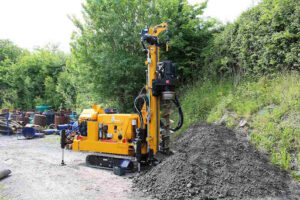
Deț
As industries grapple with the constant pressure to enhance productivity and stay ahead of the competition, Deț has emerged as a game-changer. From inefficiencies in manufacturing processes to delays in healthcare services, the challenges are multifaceted and demand innovative solutions.
Deț offers a revolutionary approach to tackling these issues head-on. Leveraging cutting-edge technology streamlines operations, reduces costs, and fosters innovation across various sectors. Whether improving supply chain logistics or enhancing patient care, Deț is paving the way for a more efficient future.
Eager to learn how Deț can transform your industry? Dive into the sections below, where we explore its applications, benefits, and the exciting future that lies ahead.
The Evolution of Deț
The journey of Deț began with the need for smarter, more efficient systems in various industries. Initially developed to address specific operational bottlenecks, Deț has evolved into a versatile solution adaptable to diverse industrial needs. Early adopters recognized its potential to transform traditional processes, leading to widespread interest and subsequent innovations.
As technology advanced, so did Deț. Integration of artificial intelligence, machine learning, and IoT has enhanced its capabilities, making it indispensable in modern industry. Today, Deț stands as a testament to continuous innovation, offering solutions that meet current demands and anticipate future challenges.
Understanding the evolution of Deț is crucial to appreciating its impact. Each development phase has contributed to its current state, marked by efficiency, adaptability, and transformative potential. This historical perspective provides valuable insights into how Deț can be leveraged for maximum benefit across various sectors.
Key Applications of Deț in Various Industries
Manufacturing
Deț has revolutionized production lines in the manufacturing sector by optimizing processes and minimizing waste. By automating repetitive tasks, Deț allows human workers to focus on more complex and creative aspects of production. For example, a car manufacturing plant utilizing Deț can significantly reduce assembly time while ensuring precision and quality.
Moreover, predictive maintenance enabled by Deț helps foresee equipment failures before they occur, thus preventing costly downtimes. Real-time data analytics provided by Deț further enhances decision-making processes, enabling managers to adapt to changing conditions and demands quickly. This comprehensive approach ensures that manufacturing processes are both efficient and resilient.
By implementing Deț, manufacturers can achieve unprecedented levels of efficiency and productivity. The integration of Deț boosts operational capabilities and sets the stage for future innovations, ensuring that businesses remain competitive in an ever-evolving market.
Healthcare
Deț’s impact on healthcare is profound, addressing critical inefficiencies and improving patient outcomes. In hospitals, Deț can streamline administrative tasks such as patient admissions and record keeping, freeing healthcare professionals to focus more on patient care. This leads to shorter wait times and more personalized care for patients.
Furthermore, Deț facilitates the management of medical inventories, ensuring that supplies are always available when needed. In diagnostics, Deț aids in accurate and swift analysis, allowing timely interventions. For instance, integrating Deț in radiology departments can enhance the speed and accuracy of image analysis, leading to better diagnostic outcomes.
The implementation of Deț in healthcare improves operational efficiency and enhances the overall quality of care. By addressing administrative and clinical needs, Deț ensures that healthcare providers can deliver optimal patient care, ultimately improving health outcomes.
Logistics and Supply Chain
Deț has emerged as a crucial tool for enhancing efficiency and reliability in logistics and supply chain management. It facilitates real-time tracking of goods, ensuring transparency and accountability at every stage of the supply chain. This visibility helps identify bottlenecks and optimize routes, reducing delivery times and costs.
For example, a logistics company using Deț can dynamically reroute shipments based on real-time traffic data, ensuring timely deliveries. Additionally, Deț aids in inventory management by predicting demand trends and optimizing stock levels, thereby preventing overstocking or stockouts. This results in significant cost savings and improved customer satisfaction.
Adopting Deț in logistics and supply chain operations leads to a more streamlined, efficient, and responsive system. By leveraging real-time data and predictive analytics, companies can enhance their operational capabilities, ensuring that goods are delivered promptly and efficiently.
Benefits of Implementing Deț
Efficiency Improvements
One of the primary benefits of Deț is its ability to improve operational efficiency significantly. Automating routine tasks and optimizing processes, Deț reduces the time and effort required to complete various functions. This leads to faster turnaround times and higher productivity across the board.
For instance, in manufacturing, Deț can automate assembly lines, reducing the need for manual intervention and minimizing errors. Deț can streamline patient record management in healthcare, allowing healthcare providers to focus more on patient care. These efficiency improvements translate into cost savings and higher output.
Implementing Deț leads to a more efficient and productive operation. The automation and optimization capabilities of Deț ensure that businesses can achieve their goals faster and with greater accuracy, ultimately enhancing overall performance and profitability.
Cost Savings
Another significant advantage of Deț is the cost savings it offers. Deț helps companies lower their operational costs by optimizing processes and reducing waste. This is particularly beneficial in industries where margins are tight and efficiency is crucial for profitability.
For example, Deț can optimize routes and improve fuel efficiency, lowering transportation costs. In manufacturing, predictive maintenance enabled by Deț reduces downtime and extends the lifespan of equipment, thereby saving on repair and replacement costs. These cost savings can be reinvested into the business, driving further growth and innovation.
The cost-saving potential of Deț is substantial, making it a valuable investment for businesses looking to enhance their profitability. By reducing operational expenses, Deț enables companies to allocate resources more effectively, supporting long-term sustainability and growth.
Innovation and Competitive Advantage
Deț fosters a culture of innovation by enabling businesses to adopt new technologies and practices. By providing the tools needed to streamline operations and improve efficiency, Deț encourages companies to explore new ways of doing things. This innovative approach is essential for staying competitive in today’s fast-paced market.
For instance, businesses implementing Deț can experiment with new production methods or service delivery models, gaining a competitive edge. The ability to quickly adapt to market changes and customer demands ensures that companies remain relevant and ahead of the competition. Deț also facilitates collaboration and knowledge sharing, further driving innovation.
The implementation of Deț provides businesses with a significant competitive advantage. By fostering innovation and enabling rapid adaptation, Deț ensures that companies can meet the challenges of the modern market, driving growth and success.
Future Trends and Predictions for Deț
The future of Deț is bright, with numerous advancements on the horizon. Deț is expected to become even more sophisticated and capable as technology evolves. One of the key trends is integrating artificial intelligence and machine learning, which will enhance Deț’s ability to predict and respond to various operational challenges.
In addition, the rise of the Internet of Things (IoT) will lead to more connected and intelligent systems. Deț will be able to interact with a wide range of devices, collecting and analyzing data in real-time to optimize operations further. This will lead to even greater efficiency and innovation across industries.
Moreover, the adoption of Deț is likely to expand beyond traditional industries. New sectors, such as agriculture and education, are beginning to recognize the benefits of Deț, and we can expect to see more widespread implementation in the coming years. This will open up new opportunities for growth and development.
The future trends and predictions for Deț highlight its potential to drive further advancements and innovations. As technology evolves, Deț will continue to transform industries, ensuring that businesses can meet the demands of the modern world.
Challenges and Considerations in Adopting Deț
While the benefits of Deț are significant, there are also challenges to consider when implementing this technology. One of the primary challenges is the initial investment required. Implementing Deț can be costly, and businesses must carefully assess their budget and resources before adopting this technology.
Additionally, there may be resistance to change within the organization. Employees may be hesitant to adopt new technologies, and a learning curve may be associated with using Deț. To overcome this challenge, businesses must invest in training and support to ensure a smooth transition.
Data security is another important consideration. As Deț collects and analyzes large amounts of data, businesses must protect their data from cyber threats. Implementing and regularly updating robust security measures is essential to safeguard sensitive information.
Addressing these challenges is crucial for the successful implementation of Deț. By carefully planning and preparing for these considerations, businesses can maximize the benefits of Deț and ensure a smooth and successful transition.
Conclusion
Deț is a transformative technology that offers significant benefits across various industries. By improving efficiency, reducing costs, and fostering innovation, Deț enables businesses to stay competitive in today’s fast-paced market. As technology continues to evolve, the potential for Deț to drive further advancements is immense.
Implementing Deț requires careful planning and consideration, but the rewards are well worth the effort. Businesses can achieve their goals and drive growth and success by addressing the challenges and leveraging the benefits. The future of Deț is bright, and the possibilities are endless.
FAQs
What is Deț?
Deț is a cutting-edge technology that enhances efficiency and innovation across various industries. Automating routine tasks and optimizing processes, Deț helps businesses improve productivity, reduce costs, and stay competitive.
How does Deț improve efficiency?
Deț improves efficiency by automating repetitive tasks and optimizing processes. This reduces the time and effort required to complete various functions, leading to faster turnaround times and higher productivity.
What industries can benefit from Deț?
Deț is beneficial across various industries, including manufacturing, healthcare, logistics, and supply chain management. It can also be applied in emerging sectors such as agriculture and education.
What are the challenges of implementing Deț?
Challenges of implementing Deț include the initial investment required, resistance to change within the organization, and data security concerns. Businesses must carefully plan and prepare for these challenges to ensure successful implementation.
What are the future trends for Deț?
Future trends for Deț include the integration of artificial intelligence and machine learning, the rise of the Internet of Things (IoT), and the expansion of Deț into new sectors. These advancements will further enhance the capabilities of Deț and drive innovation across industries.







